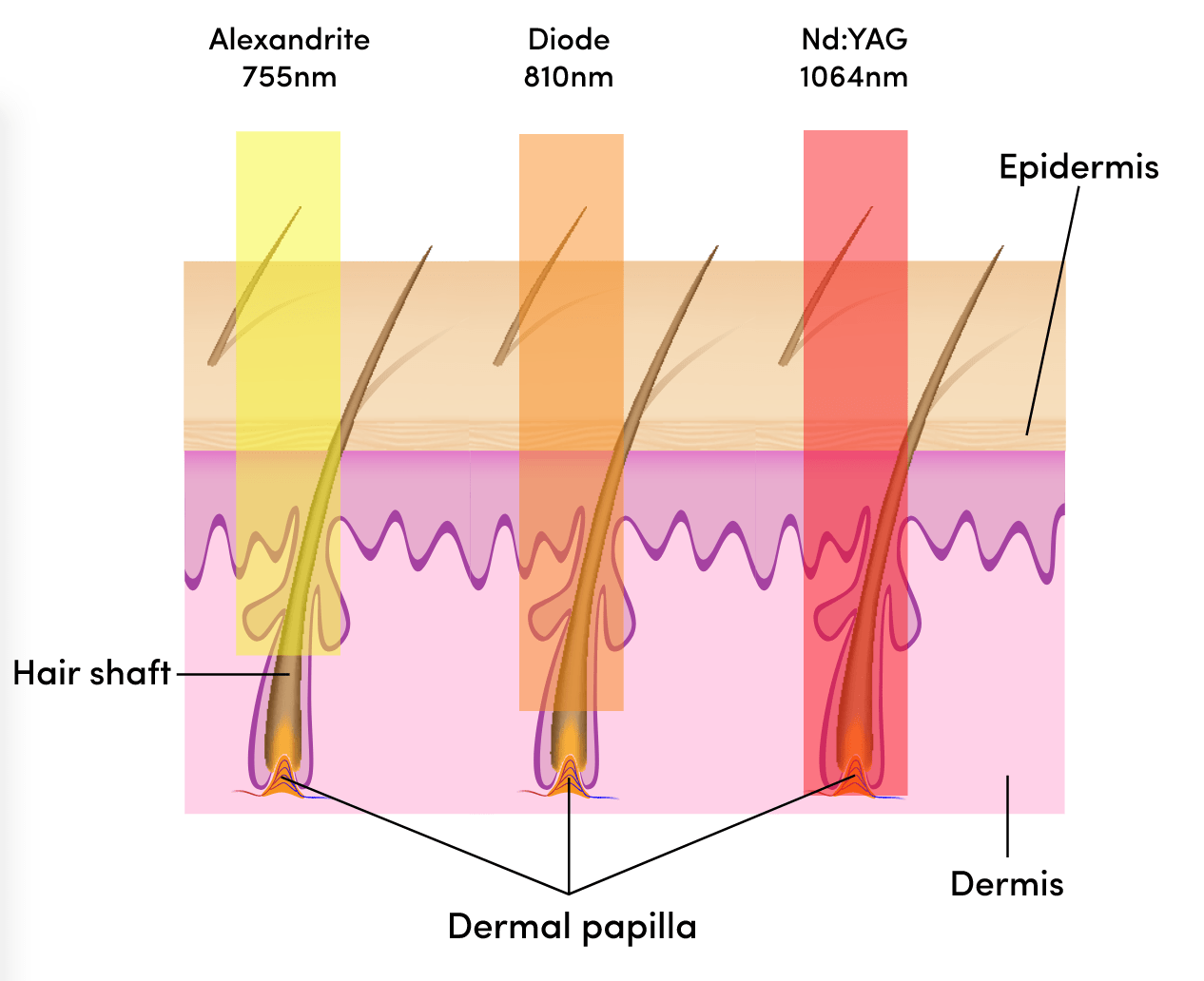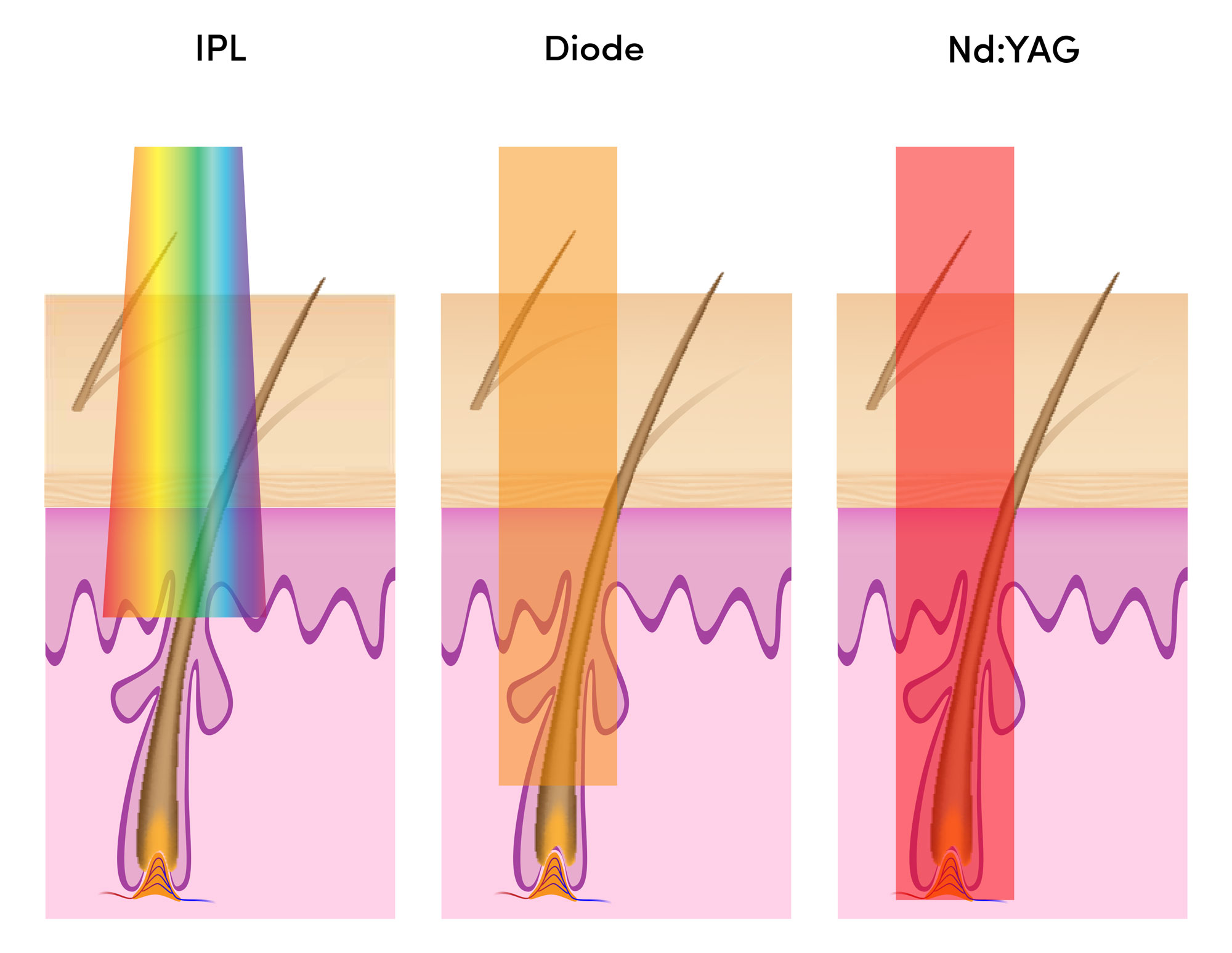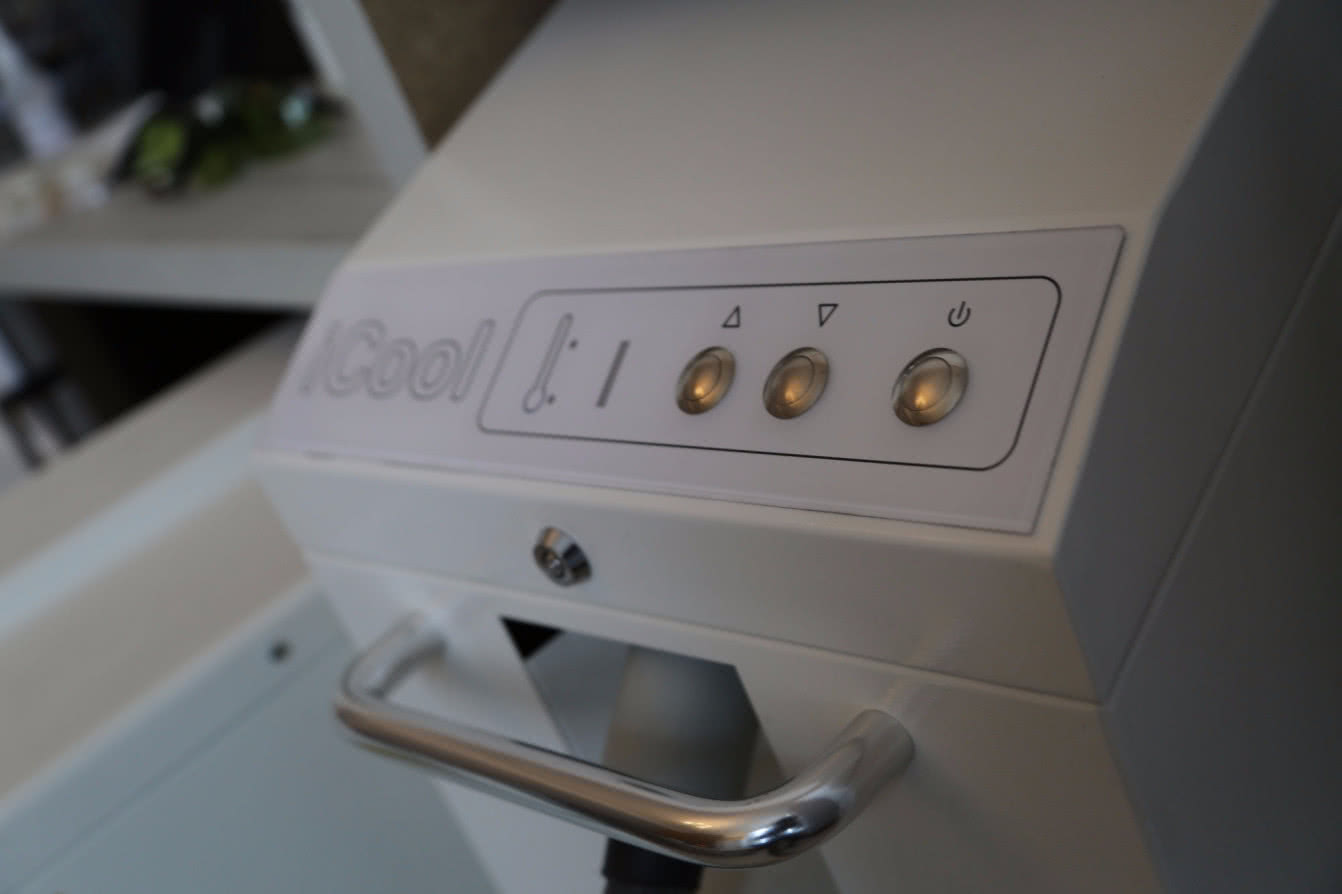
Technology
Laser technology for hair removal
Find out about laser technology, how it is used in hair removal and discover iCool, the system we use to make our laser hair removal treatments as painless as possible.
What is laser?
Laser is an acronym for 'light amplification by stimulated emission of Radiation'. Laser is basically a type of light that carries only a specific wavelength, as opposed to visible light, which carries a range of wavelength (colours of the rainbow).
Lasers are more than just powerful torchlights. The difference between ordinary light and laser light is like the difference between ripples in your bathtub and huge waves on the sea. You've probably noticed that if you move your hands back and forth in the bathtub you can make quite a strong wave. Now, if you repeat the same process but this time ensure that you move your hands in sync with the last wave you can actually see the waves get bigger and stronger. Imagine doing this a few million times in the open ocean; in time, you will have made a wave that will tower over your head!
A laser does something similar with light waves; it starts off with weak light and keeps adding more and more energy, so the light waves become ever more concentrated. Laser light is monochromatic - this means it is of one wavelength (colour). Laser light is also a relatively narrow form of a beam in a specific direction.
What are the different types of laser technology?
Alexandrite
This type of laser uses an alexandrite crystal as the laser medium, emitting red, near-infrared light. Its effective for lighter skin tones, best suited to those at the lower end of the Fitzpatrick scale (I to II), and operates with a wavelength of 755nm.
Alexandrite lasers are not suitable for darker skin tones (Fitzpatrick scale III-VI). They can cause changes to your skin's pigment and be more painful due to the rapid repetition rate of the laser.
Diode
This type of laser is set to a wavelength of between 800 and 810nm. Diode laser hair removal is different to other systems in that diodes or semiconductors are used to form the light source. They have a longer wavelength and can treat large areas of the skin. Diode laser is better for darker skin (Fitzpatrick scale IV-VI). However, they are known to be linked to urticaria (hives). Side effects can include burns and skin discolouration.
There is limited research available on which to form conclusions as to long-term efficacy and safety as they are the newest of the laser hair removal system currently available.
Nd:YAG
Nd:YAG (Neodymium-doped Yttrium Aluminium Garnet) laser has a wavelength of 1064nm, which has the capability to reach deeper layers of the skin tissue, disrupting future hair growth. It also has the ability to treat acne, thread vein, and fungal toe. Nd:YAG is a crystal that is used as a lasering medium for solid-state lasers. They are developed specifically to be effective on all skin tones, including Asian and Afro-Caribbean skin (Fitzpatrick scale III-VI), for which other systems are ineffective and can be unsafe.
Nd:YAG laser is safe for darker skin as its wavelength is longer than other lasers used for laser hair removal. For this reason, it can penetrate deeper into the skin, bypassing the melanin in the skin (which there is more of in darker skin) and targeting the melanin in the hair. Therefore, it is considered to have the ability to treat all skin tones.
Nd:YAG laser is also very effective in clearing ingrown hairs because the laser kills the supply of blood to the hair follicle and ultimately there is no regrowth of hair, therefore the issue of ingrown hairs is eliminated.

What is IPL and how does it work?
IPL is an acronym for 'intense pulsed light'. IPL cannot be classed as laser due to the fact that it delivers a broad spectrum of light wavelengths (between 500nm and 1200nm). It works similarly to a flash light in that it scatters unconcentrated light over a wider area. The pulsed light is delivered via a handheld flashgun, which is passed over the skin and breaks down the hair regrowth cycle.
In order for IPL to work it has to penetrate into the skin; as the light penetration is shallow and dispersed, only some of the hairs will receive the correct pulsed light wavelength. IPL does not have the capability to effectively treat deep-rooted hair. This means the patient will not achieve the desired result of permanently removing the hair using this method. Consideration should also be given to the fact that dispersed light is absorbed into the surrounding tissue, this leads to heating up the melanin in the skin, increasing the risk of burns. IPL is ideal when there is more contrast between the base skin colour and the target (hair) colour. i.e. fair skin (Fitzpatrick scale I or II) and dark hair.
Darker skin tones (Fitzpatrick scale III and above) are not good candidates for IPL treatment. The pulsed light will naturally be attracted and absorbed by the pigment in the skin. This will damage the skin by leaving it darker or lighter than before.
IPL will require continual ongoing regular top up sessions. A full treatment course should typically be 10-12 sessions spread 4-6 weeks apart. A treatment cycle could therefore take more than a year to complete.

| Feature | IPL | Diode | Nd:YAG |
|---|---|---|---|
| Broad spectrum of light waves | |||
| Single precise concentrated beam of light | |||
| Superficial penetration of the skin only | |||
| Deepest penetration | |||
| Greater risk of burns | |||
| Effective results in 6 sessions | |||
| Effective results in 8 sessions | |||
| Requires more than 10 sessions | |||
| For all skin tones (I-VI) |

myLaser technology
After extensive research and field trials we had decided to invest in Fotona's Nd:YAG 1064nm wavelength product. We have been trained by Fotona's UK distributor, as they have been proven to be the gold standard for laser machines used for permanent hair reduction.
Fotona was established as a manufacturer in 1964. Since then, they have produced frontline laser devices for defence, optical communications, industrial, dental and medical applications.
Today, Fotona are a world-leading medical laser company recognised for its innovative, highest performance award winning laser systems in the world.
Find out more about our XP Spectro on the Fotona website.
What is an iCool system
Here at myLaser we have invested in an iCool machine. These units are intelligent refrigeration systems that attach to the laser hand piece.
The iCool unit delivers chilled air at temperatures down to -30°C in a precision manner, cooling the skin during treatments and minimising any potential for patient discomfort.

Need to know
Arrange a free consultation
{{ consultationErrorMessage }}
{{ consultationSuccessMessage }}
Sign up for offers
{{ newsletterErrorMessage }}
{{ newsletterSuccessMessage }}
